Does Every House Have a Septic Tank? Everything You Want to Know!
-

- Last updated:
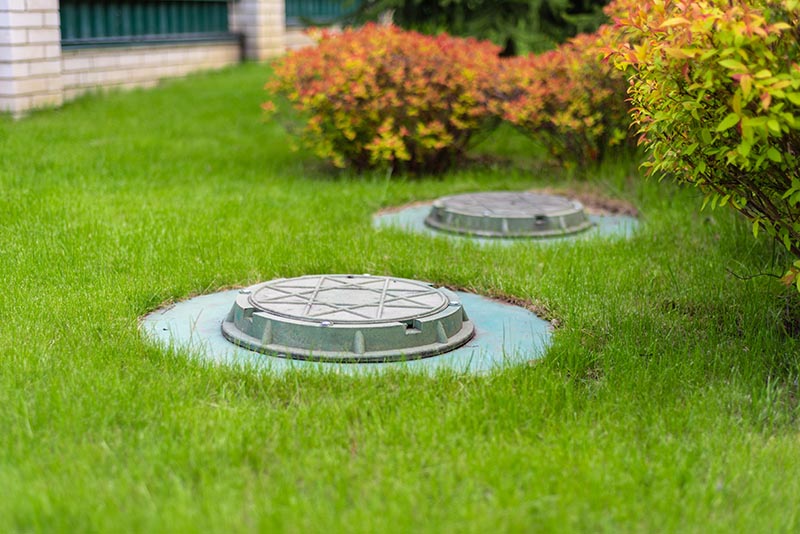
Septic tanks are vital installations for the removal of wastes from any property. However, not every house has a septic tank installation, even though every house requires a functional waste management system to deal with household waste. In fact, only about 20% of houses have a septic system. Most people favor public sewer systems to dispose of wastewater in the city.
As important as a septic tank is, most people have a first encounter with them when purchasing their homes. Yet, since some people do not understand how septic tanks work, they never really know what buying a house with a septic tank entails.
In this article, we will discuss why some properties are served by a septic tank system and why others rely on the public sewer system. Read on to learn more.
Septic Systems on Different Properties
The kind of waste management system used in a household depends on the existing design within an area and the locality. The house will be connected to the public sewer system if your home is located within a municipality that offers an infrastructure for waste management. As a municipality resident, you are expected to pay some fee to help maintain the public sewer system.
However, a private waste disposal system is pertinent for those who live in a rural area that lacks a public sewer system. These private systems usually include a leach field and a septic tank to purify household effluent.
As an owner of a septic tank, it is your sole responsibility to keep your system functional and operational.
How Do I Know If I Have a Septic Tank?
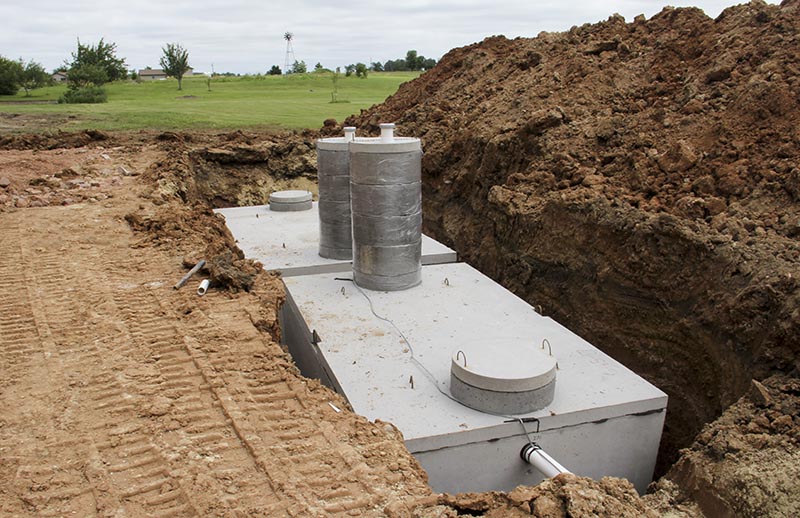
There are several ways you can determine if a property is connected to the municipal sewer system or has a septic tank. Here is how:
- You can ask your real estate agent to search the property records. Since a waste management system is an important home fixture, it should be appropriately documented.
- Consult the local government to determine whether a house is zoned for a septic or public sewer system.
- Check for septic system markers in a house, such as risers and lids, entry points, and septic vents protruding from the ground.
- Use your agents to contact previous house owners to inquire if the property has a functional or decommissioned septic system.
- If you live in a neighborhood with a block of houses, you can inquire from your neighbors about the type of waste management system the block utilizes.
- Use engineering plans or consult a property survey to find out the location of the septic system.
The 8 Types of Septic Systems That May Be Installed in Your Property
Septic systems are the most cost-effective option for disposing of household waste products. They help get rid of the costs of sewer bills and are ideal for properties located in rural areas where municipal systems cannot reach them.
However, the type of septic system you can find in a house will vary depending on soil type, location, number of occupants in a household, and many more. The different types of septic systems you can expect to find in a house feature a septic tank, and they include:
1. Conventional Septic Systems
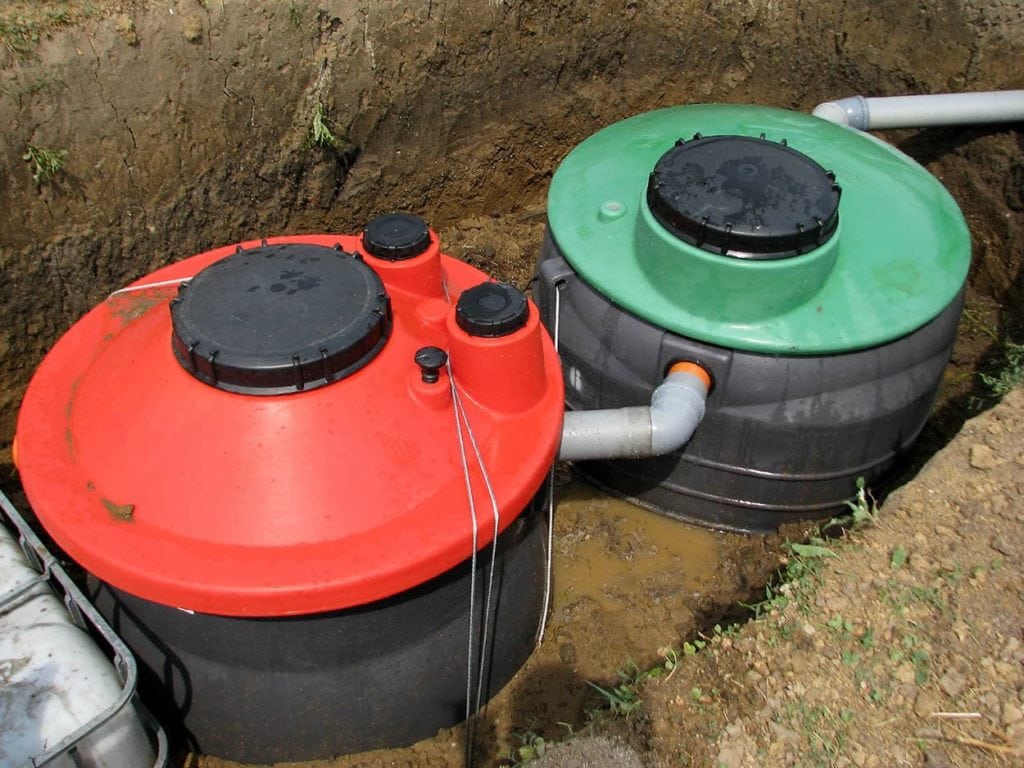
These systems typically consist of a gravel or trench drain installed in family homes. However, some of the conventional septic systems feature a gravelless drain field made from ecologically friendly materials to help reduce the environmental footprint of the system.
2. Drip Distribution Septic Systems
These septic systems are usually installed in less soil when compared to other septic systems. However, they require a pump tank to force wastewater into the drip tubing.
3. Aerobic Septic Systems
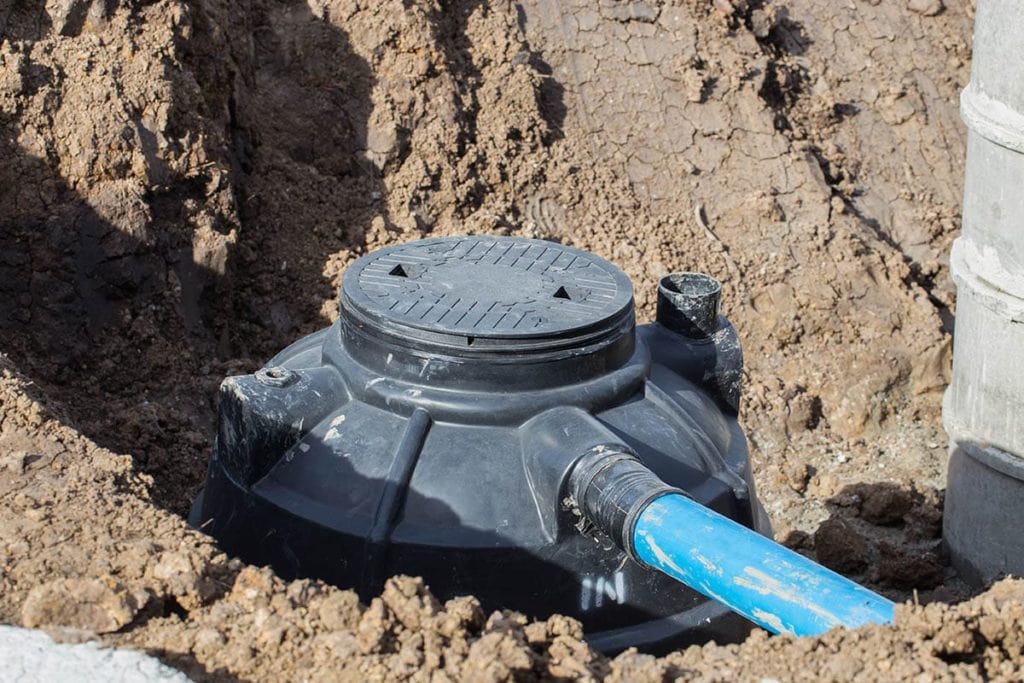
These systems work the same as small-scale sewer systems (by forcing oxygen into the septic tank), which helps increase the bacteria count in the tank. This helps treat waste effluent more effectively, especially for systems located in areas with soil that does not meet the best conditions for the installation of a septic system.
4. Mound Septic Systems
These systems consist of dirt or sand mounts that the septic system trench leads to and where wastes drain out. Mound systems are usually installed in regions where shallow bedrock or soil is present.
5. Sand Filter Systems
Recirculating sand filter systems work the same way as mound septic systems by forcing household wastes from the septic tank to a pump. This helps purify waste by running it through a sand filter, releasing it into the ground to disperse. Sand filters are very effective at decomposing nutrients in wastewater, but they are quite expensive.
6. Evapotranspiration Bed Septic Systems
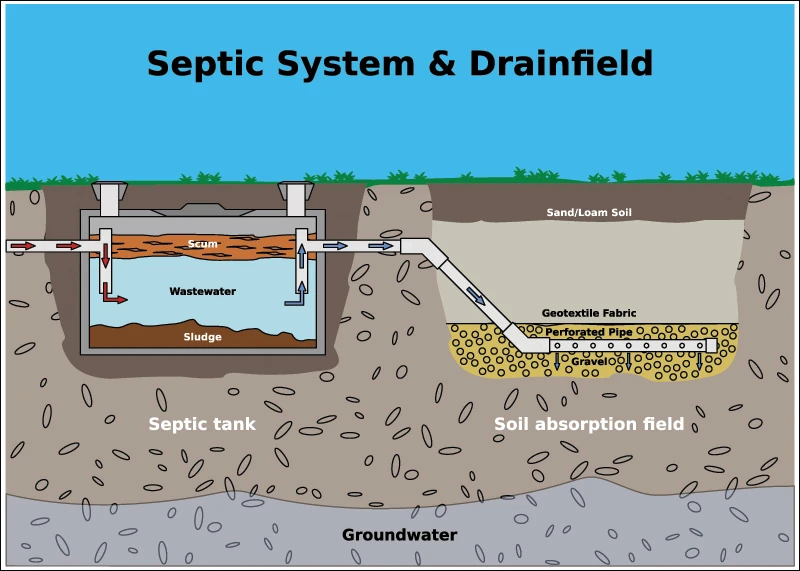
This septic system is quite different from the above-mentioned ones because it features different drain fields. When wastewater enters the drain field, it evaporates into the atmosphere without ever reaching the groundwater or the soil.
7. Constructed Wetland Septic System
This system forces wastewater into a wetland cell that helps filter harmful bacteria by running it through microorganisms and plants before directing it into the drain field.
8. Cluster Septic Systems
This type of septic system usually collects wastewater from several properties and directs it to a different treatment system before releasing it into the drain field.
Considerations When Installing or Buying a House With a Septic Tank
Septic tanks are expensive household installations. However, installing one will significantly save you a lot of money over time, especially if you opt for a plastic septic tank. Maintenance practices are vital, depending on the septic tank system, but they do not need frequent replacing until the tank stops working properly, gets old, or gets outgrown.
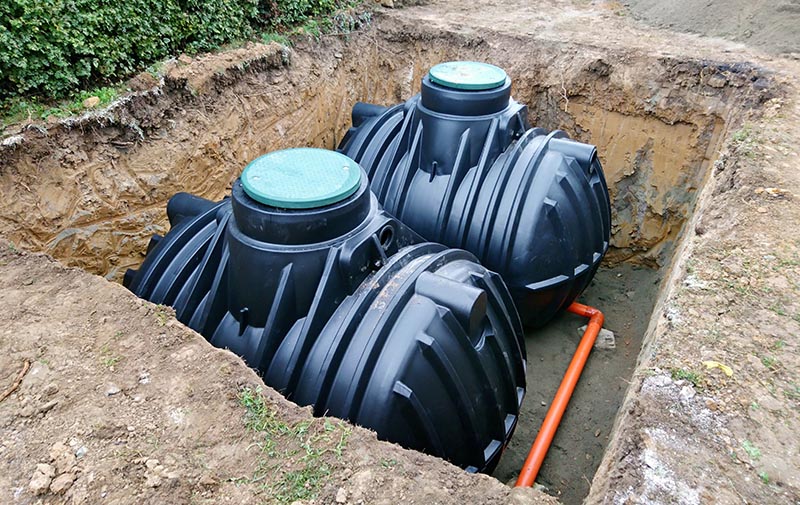
Before installing a septic tank or when buying a house with one, here are some important aspects to consider.
- Understand Your Local Laws
Local laws usually have rules and specifications regarding septic maintenance, inspection, and replacement. Some local health departments and states insist on septic tank inspection before selling a home. They may also require you to install a larger septic tank if you opt to add plumbing or expand your home.
- Get Your Septic System Inspected
Septic systems require regular maintenance and inspection to avoid problems. Inspectors are required to check for proper ventilation, drainage, and the integrity of the septic system. They also check for clogging or leaking issues and any other potential problems before they become unsolvable.
Usually, septic system inspections should happen after every three years, but most people tend to forgo them. Nevertheless, if you are about to purchase a home with a septic system, ensure that you ask for the inspection history. By reviewing these reports, you can find out about any previous system issues, such as clogged filters and tree roots blocking the pipe.
- Know Your Septic System Specifications
You also need to have an idea of the type of specifications that your septic tank features. The liters of the tank will help you determine the draining frequency of your tank.
Besides the size, you also need to ascertain the installation period of your septic tank because it requires replacement every 20 to 40 years. Depending on the size of your tank, you can spend about $3,000 to $10,000 to replace a faulty septic tank. Of course, this will also depend on where your property is located.
- Understand Issues Related to Septic Systems
If a septic tank is not properly maintained, issues like clogged or ruptured pipes, flooded drain fields, or leaks can result in a big mess on your property. For example, if heavy rains cause your yard to flood, but your septic tank is not heavy enough to handle its weight, it could end up floating or moving and damage the connecting pipes.
Furthermore, if the drain field or the septic tank has too much liquid, it may not be able to drain fast enough or at all. This normally creates backflow problems, especially if you constantly run things like a washing machine or dishwasher or take frequent baths and showers.
Finally, you need to know how to detect and understand potential issues in your septic tank before they escalate. You should be able to detect issues like odd plumbing sounds, unusual odors, backflow, and slow drainage issues. These are all signs that require septic tank inspection.
Septic Tank Maintenance Practices
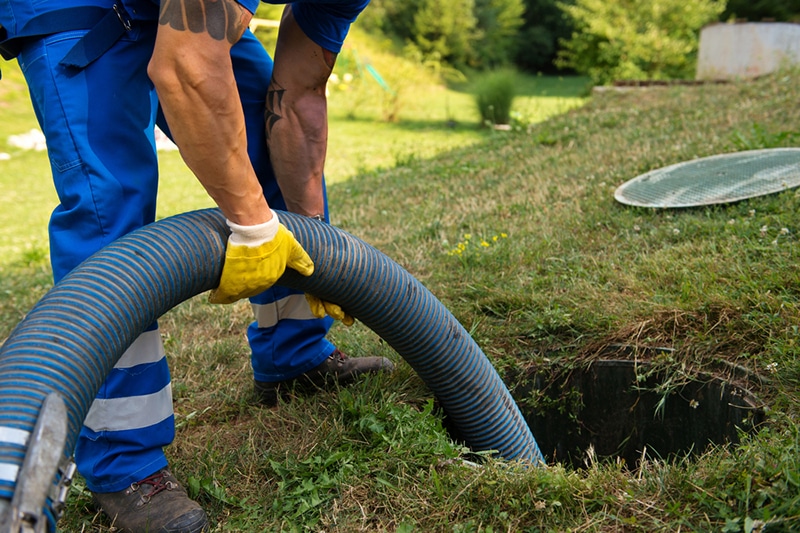
Some types of waste should not go down your drain, whether you have a septic tank or are connected to the main sewer system. The only difference is since septic tanks require a specific environment to be effective, if you flush some material that destroys the bacterial environment, you risk messing up your septic system.
Some hygiene products, such as dental floss, oil, hair, and cat litter or paper towels, can cause clogs in the system and hamper drainage. The clogs can result in leaky pipes or sewage flowing back into your property.
Therefore, it is pertinent that anything that you flush down your drain is safe for the septic tank and can dissolve over time. Even some products like bleach, despite being a great cleaning agent, could kill the beneficial microbes in the septic tank that help break down household waste products.
As mentioned earlier, you must regularly maintain your septic system to avoid draining issues in your property. If your house has a septic system, you have to pump out the sludge at least once every few years.
You might also want to use biological additives to increase the microbe count in the septic tank. These include beneficial enzymes and bacteria that help dissolve scum and sludge. Furthermore, adding additives can help increase the time required between septic tank cleanings.
Conclusion
Septic systems may be some of the most viable waste management systems, but they do not require installation on just any property. They are best suited for homeowners who live in an urban setting but are not connected to the municipal sewer system. They are also ideal for people who reside in rural areas where the public sewer system cannot reach them. If you live in a rural area, septic tanks are the most effective and convenient installation for removing household waste.
Getting a septic tank installed in a property can be a headache for most people, but with proper and regular maintenance, you can keep your septic system safe for several years. If you purchase a house with a septic system, you should request inspection documents to help you determine the exact location of the septic tank. If you want to install a new one in your home or expand your property, remember that septic tanks are subject to local laws and regulations.
Featured Image Credit: Yuri Snegur, Shutterstock
Contents



